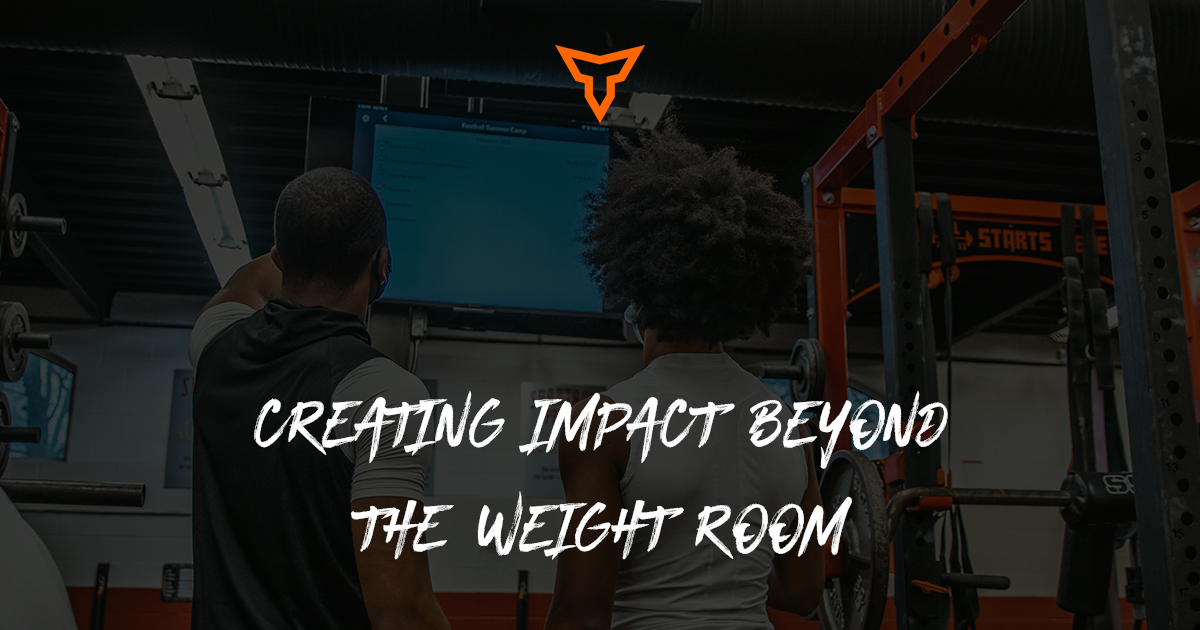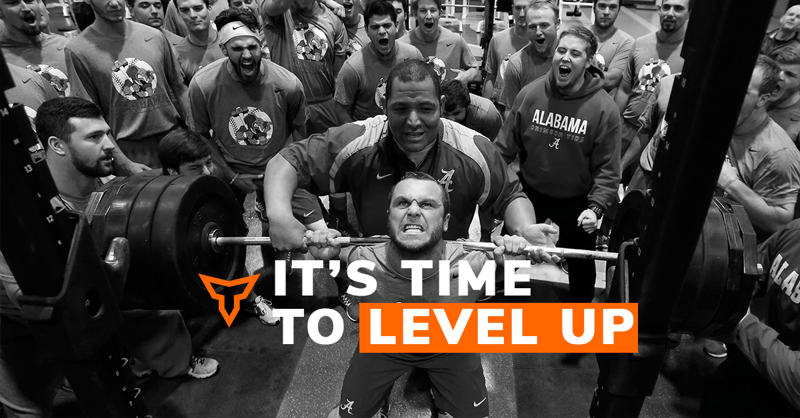Implementing French Contrast Training In A Group Setting
When Cal Dietz introduced the Triphasic Training method to the strength and conditioning world it forever changed how many coaches programmed. Training with a focus on “triphasic muscle action” as Coach Dietz puts it, allowed for a program that translated far better to the explosive nature of sport than most traditional linear programs.
One of the methodologies used by Coach Dietz that has grown significantly in popularity since his “Triphasic Training” came out has been the French Contrast Method. Originally created by the French track coach Gilles Cometti, this method takes advantage of the PAP effect by combining 4 contrasting loading styles (heavy compound, plyometric, light compound/weighted jump, & assisted plyometric) to increase power production & endurance.
A sample workout would look like this:
Back Squat x3 (85%)
30s rest
Plyometric Hurdle Hops x5
30s rest
DB Squat Jump x5
30s rest
Band Assisted Jumps x5
4 min rest & Repeat
Here is an example of one of our athletes performing one round of French Contrast Method:
This is very similar to both the complex and contrast training methods traditionally used to take advantage of the PAP effect in order to increase power. The French contrast training method goes a step further however by introducing a level of anaerobic work capacity to the contrast training. This means not only are you developing higher levels of power output, but athletes are developing the ability to produce that power for longer periods of time!
I noticed this effect when I first implemented French Contrast training with our baseball team a few years ago. We would do 6 rounds of French contrast, and we would test our vertical at the beginning of each round. The first week our verticals would peak on the 2nd or 3rd round, then drop due to fatigue. Every week I had athletes hitting vertical PR’s left and right. But around week 4 something interesting started to happen. My athletes were still hitting PR’s, but they were no longer hitting them on round 2 or 3. Now they were hitting them on round 4, 5 and sometimes even 6! What this meant was not only were we getting more explosive, but we were now doing it in a fatigued state!
The Challenges of Implementing French Contrast Method
French contrast training is an incredible tool. I have seen massive increases in verticals in a very high percentage of my players (75%+). The problem of logistics comes in however when working with large teams. Timing is key to take advantage of the PAP effect, so athletes cannot wait around 1-2 minutes between exercises. Also athletes must be able to load relatively accurate percentages in order to fully take advantage of the methodology. Much of the training is very technical in nature. Plyometrics must be performed with maximal intent and technique in order to truly stimulate increases in force production. So if I have 50 athletes in a weight room, how do I keep a consistent flow? How do I prevent traffic from backing up and not only creating inaccurate rest times but even worse: distraction and boredom.
After facing many of these challenges, I have made some tweaks to ensure that the room flows smoothly and athletes don’t get too much distracting “down time”;
- Keep It Simple Stupid. With plyometric and jump training, it's tempting to try to pull out our “fancy tools”. Don’t. Low Hurdle hops, depth jumps, and pogo’s get the job done with little risk or need for technical prowess. Remember with any type of hurdle plyometrics the goal is to create maximum hip displacement so often shorter is better than taller. As for the weighted jump exercise, I have found DB jumps improve flow by being quick and efficient without much set up.
- Use your rest time. French contrast requires a 4-5 minutes break between the final assisted plyometric and the next round’s compound movement. Use this rest time to do some “active recovery”. Fill in some low and intermediate intensity exercises with unused muscle groups. This can help you insert some nice injury prevention and filler exercises all while “spreading the room out”, keeping athletes out of each other’s way. I have found 4-5 exercises is the sweet spot.
- Create Lanes. Flow is everything if you are going to efficiently implement French contrast method. So we create 3 “lanes” in our weight room according to strength and ability. Lane 1 is for our strongest athletes, lane 2 for intermediate, and lane 3 for our weakest athletes. Each lane contains all of the exercises for our French contrast that day. By doing this loading and unloading weights is kept to a minimum.
- Test Each Round. This is less for efficiency and more for athlete buy-in. We test vertical using the Just Jump mat at the beginning of each round. Athletes then enter their vertical into TeamBuildr before starting the round and it pops up on our weight room leaderboard screen. This creates an atmosphere of competition in the room. It also lets athletes visibly see both the daily and weekly effect of PAP. Intent is SO important when it comes to improving power production so visually seeing their numbers improve helps athletes’ create high intent round after round.
- Self-Selected Loads. Ideally numbers should be fairly accurate percentages for each athlete. However, we often allow athletes to self-select their load for the compound movement and weighted jump. This speeds up the flow of the room, and also allows for loads to adjust by RPE. I simply tell my athletes how many reps they should have “left in the tank”. So if we are performing 3 reps on our compound movement, I tell them they should have 2 left. This isn’t a requirement but has definitely helped our efficiency.
- Adjust the size of the circuit by the number of athletes. If I have 4 exercises in the circuit, and 4 active recovery exercises this allows for 8 athletes to work at once. With 3 lanes this triples to 24. With a few athletes testing vertical or getting water this means I can efficiently run up to 30. Sometimes it’s necessary to run a room with 40, 50 or even 60. Adding some stations to active recovery or even to the circuit can quickly accommodate more athletes. 3 lanes of 5 circuit exercises and 5 active recovery allows for 40. Add a 4th lane and you’re up to 60. Adjust as necessary but just realize that you have complete control over what the flow of the room looks like.
Exercise Selections
The French contrast training method is a canvas that allows for a ton of variety in how you implement it. It can be used for lower or upper body power development, and can be used with a push or pull emphasis. Here are the exercises I have found to be most successful when used with French contrast method. This is just a starting point, once you understand the concepts get creative!

Finally I highly recommend reading Cal Dietz Triphasic Training for anyone who hasn’t yet. Not only will you gain an even better understanding of the French Contrast Methodology, but you will understand how it can fit in an even larger framework for developing athletic power. You can absolutely use French Contrast training in any developmental plan and it will be an effective tool. However when combined with Triphasic Training it really becomes an unbelievable asset to your training arsenal.
Subscribe to our blog
Subscribe to receive the latest blog posts to your inbox every week.
Related posts
Private Facility Summer Training That Delivers: Building More Explosive Athletes

Creating Impact Beyond the Weight Room


